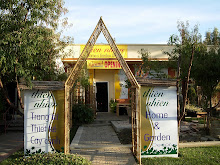Wholesale Grower Reference Information
Frequently Requested Documents:
Grower ProgramsEaster and Mother's Day Bulb Forcing Program - The most popular holiday for selling Dutch blooming bulbs. Start here if you want to learn more about forcing or to ensure you are on schedule with your Easter crop. Early and Valentines Day Forcing Program - Increasing in popularity is our Valentines day program. Who would not like to see some color during the winter months. Even President Bush gave Laura Bush tulips instead of roses for Valentine's Day. Easter Lily Forcing Schedule - This ever popular Easter Plant requires specific care, find here what is necessary to keep Easter Lilies on schedule for Easter. Oriental and Asiatic Lily Forcing Program - An easy crop to grow for Easter and Mother's Day given the right bulbs and proper handling. Perennial Pot Production - Be prepared for the rush of Spring sales by starting your bare root perennials early in the greenhouse and they will be ready for Spring sales. Water Plant Production - Water Gardening continues to increase in popularity, these easy care instructions and tips will help you maintain a successful water plant program for your nursery or garden center.
| Investing in Quality We would like to stress that we do not just talk about quality, we invest heavily in it. This year we have purchased new technology that allows us to X-Ray bulbs for viruses. Only bulb companies with an eye towards future growth and a commitment to quality have so far acquired this state of the art technology. We would like to stress that we do not just talk about quality, we invest heavily in it. This year we have purchased new technology that allows us to X-Ray bulbs for viruses. Only bulb companies with an eye towards future growth and a commitment to quality have so far acquired this state of the art technology.The new technology comes in the form of the BBX machine from Havatec (www.havatec.nl). Internally we have coined the term "MRI" machine because it allows us pass each bulb through X-RAY sensors which are able to detect bulb imperfections long before they are detectable by the human eye such as bulb rot and viruses. In the past, the only way to determine if a bulb was healthy was to cut the bulb open and see if there was a healthy embryo of a flower inside. This of course would ruin the bulb and was only used as a method to spot check for developing viruses. Other methods used in the past were to hand inspect every bulb. During the peak season, personnel would sit behind conveyor |
 belts for 8 to 12 hours per day inspecting bulbs. All this hard work would still leave the possibility of bad bulbs arriving in the United States after a two week sea voyage and transit time to the customer's business. The BBX or "MRI machine" solves this problem because it can take a picture of over 45,000 bulbs per hour without any waste and alert the inspectors of bulbs that may have potential issues.
belts for 8 to 12 hours per day inspecting bulbs. All this hard work would still leave the possibility of bad bulbs arriving in the United States after a two week sea voyage and transit time to the customer's business. The BBX or "MRI machine" solves this problem because it can take a picture of over 45,000 bulbs per hour without any waste and alert the inspectors of bulbs that may have potential issues.

 immerse in about 12 inches of water. Planting them first in hanging baskets will avoid having your employees or customers continually get their clothes wet when digging for water plants.
immerse in about 12 inches of water. Planting them first in hanging baskets will avoid having your employees or customers continually get their clothes wet when digging for water plants.